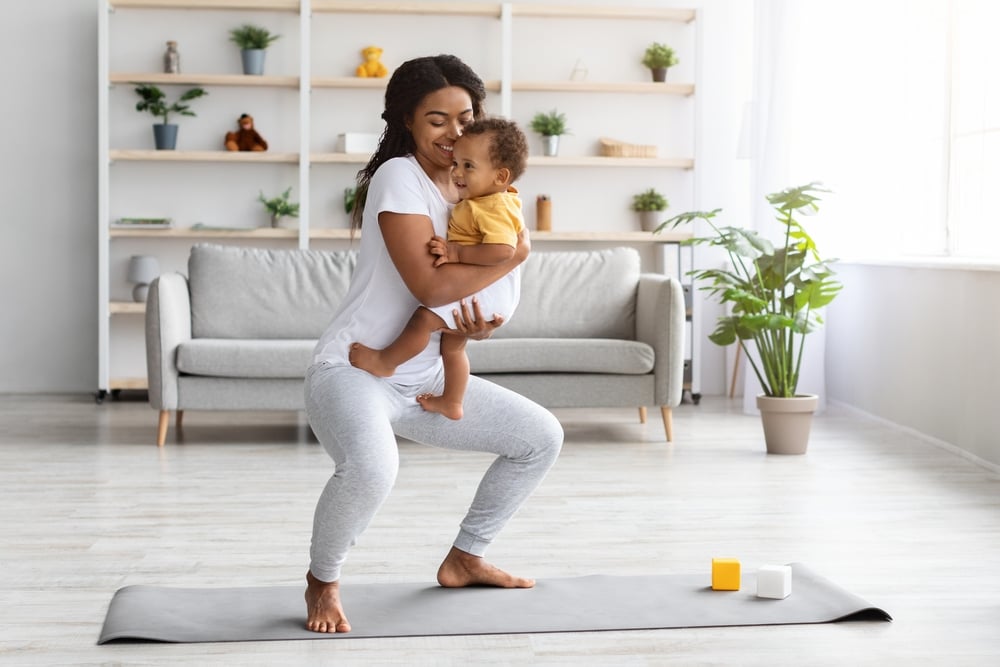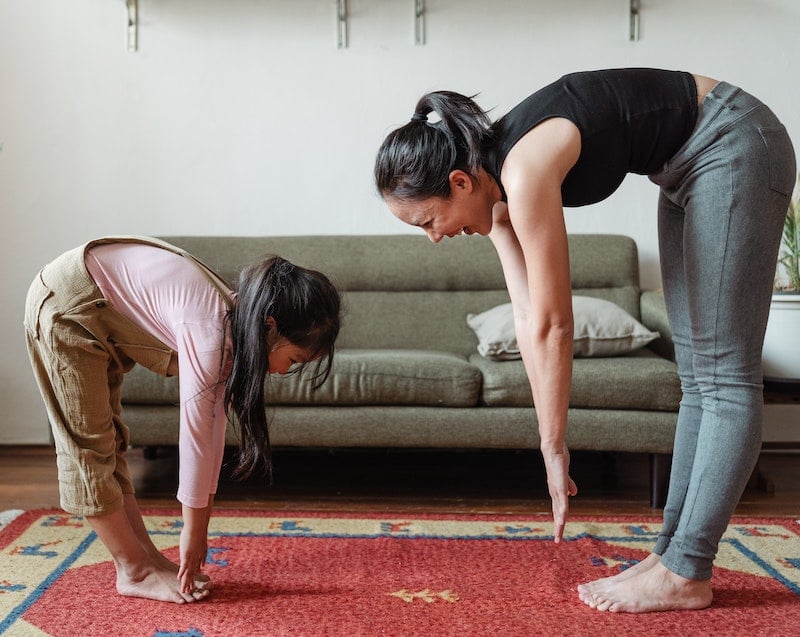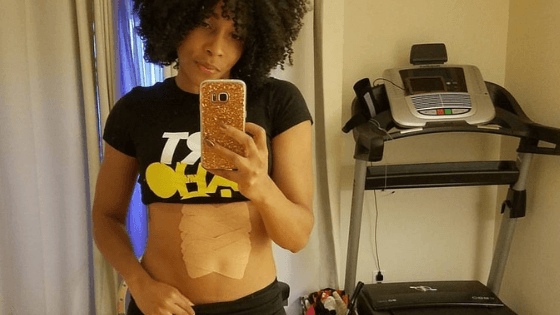I hear so often “When can I do [insert exercise or sport of your choice] again?”
So first, take care and time with your goals mindset here, especially if your ‘exercise of choice’ involves a marathon, taking an intense HIIT class or a 100KG deadlift. Awesome goals but not awesome for a woman who had a baby in recent weeks, months or sometimes even years, and whose body is not ready to run, lift, jump or plank, just yet.
But note, ‘yet’. Not ‘ever’. You just need to build your foundations first.
There’s frustration around having to take things slowly after having a baby. We see images everywhere of toned celebs who have “snapped back”, alongside body-shaming photos of those who according to the ever-judging media, have somehow missed the mark. Is it any wonder we put so much pressure upon ourselves to rush back to doing the heavy, high impact stuff?
So when can we get back to the exercises and activities we love doing?
When can we return to Zumba class, start holding that yoga pose we’re determined to master? Start beating pre-pregnancy PBs in weightlifting? Rejoin your favourite HIIT class and work up a sweat?
Here’s the thing, my love. It depends. There’s no one size fits all criteria for returning to high impact exercise post-baby. Exactly what you wanted to hear, right? 😉
We start by listening to our body.
You need to listen and look out for the signs it’s clearly giving you.
The signs…
when your body is telling you it is not ready to do what you’re asking it to do post-baby
- If you ever wee yourself, even a little bit! Pelvic floor weakness is a red flag that something isn’t right
- If you have any kind of pain in the pelvic or lower back area whilst exercising or after exercising
- If your core feels unstable or you feel like your insides are unsupported when you do any exercise
- If you shake or tremble during any exercise, yoga pose, movement or hold. Have you ever done a plank and your whole body trembles? That’s what I mean!
- Doming, bulging, straining, protrusion or anything sticking out where it shouldn’t be from your abdomen or pelvic floor, during or after exercise
Any of the above sound like you? If the answer is yes then certain types of exercise will only make you mummy tummy worse. No amount of planking, crunching or running is going to flatten your tummy, help to heal your diastasis recti or stop leaking after baby.
Exercises to avoid
With diastasis recti, core weakness, pelvic floor dysfunction, and any nagging symptoms you aren’t sure about
❌ Sit-ups or crunches
❌ Oblique twists
❌ V-sits of any kind. Yogis, avoid Boat pose.
❌ Planks
❌ Push-ups
❌ Jumping or skipping
❌ Burpees
❌ Running
❌ Heavy lifting
❌ Pull-ups
Core exercise should go hand in hand with ‘working out’. It’s not something we do for a while and then forget about, once we’re back to the fun, sweaty, heavy stuff. Mindful core work needs to be at the forefront of your mind always, and that doesn’t matter if you’re lifting your 7kg baby out of her cot or an 80kg barbell at the gym. If you throw everything you’ve learnt about core out the window once you hit the running track or your local bootcamp, you will risk undoing all your hard work up until this point.
Putting the time into core exercise and making it part of your every day, for every day going forward as long as you want to be a healthy, happy, functional and strong human being, is the key to making this work and to being able to do the stuff you love.
A key mindset shift is that core exercise isn’t a temporary replacement for high-intensity exercise. It’s fundamental, the core, literally, of your fitness and strength.
Key takeaway
You cannot strengthen or build muscles that aren’t functioning optimally. If your core or pelvic floor muscles are not working right, you can’t just make them stronger by planking, crunching or running. What will happen instead is that other parts of your body – namely your back, or pelvic floor, will take up the strain…
…Or, they won’t be able to take the strain. When excess intra-abdominal pressure is too much for your muscles to withstand, then incontinence, prolapse, hernia, or diastasis recti may be the result. These are signs that your core is not yet ready to run faster, lift heavier, plank for longer, or crunch more.
So to answer your original question. When can you hurry up and do the hardcore exercise again? When your body isn’t giving you ANY of the warning signals above, even if just a little bit when you are free of all of the danger signs listed above.
Your body will thank you for taking the time to properly heal and restore your core, to ensure it is functioning properly and in correct alignment. When you have done this work and you are ready to move on, you can gradually progress to the exercise or movement you love, but keep in mind everything you’ve learnt from MUTU System, how to mindfully move, engage your muscles and move correctly whilst doing any exercise. You must weave all the knowledge you’ve acquired into your workouts, poses, movements and every day. These all need a core that works.
If you have or have had prolapse or hernia, surgically repaired or not, you must seek the advice of a specialist Women’s Health Physiotherapist to discuss your individual circumstances and whether or not you should ever do these types of exercises again. It’s better to work with our body rather than against it, pushing it through the leaking, pain and instability. There are plenty of alternative exercises you can do with the guidance of your physio.
Key takeaway
Listen to your body. Notice the signs and signals. Back up, focus on function and strength first. You deserve a body that works and allows you to do the stuff you love, without pissing yourself.
The MUTU System program has been designed with your body in mind. The workouts are gradual and restorative, then introducing more intensive but low-impact workouts. You’ll be taught how to assess yourself, how to know when you can ‘move on’, and how to adapt when your body isn’t strong enough just yet.
Goals of lifting heavier, running further or faster, rowing hard, or whatever your choice, are great but first focus on rehabilitation and strengthening so that you can.
With a fully functioning core and pelvic floor you can exercise and move any way you like!












